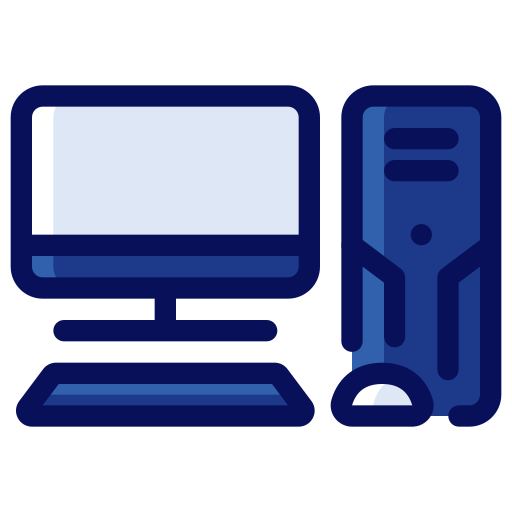EA? Don’t play!
This is a secondary account that sees the most usage. My first account is listed below. The main will have a list of all the accounts that I use.
Personal website:
- 0 Posts
- 104 Comments

 10·18 days ago
10·18 days agoYep, probably not. I’d prefer AI so much to our CEOs.
Long live Gaben.

 817·18 days ago
817·18 days agoMaybe he can pass it to an AI configured to uphold his ideals from beyond the grave?

 20·24 days ago
20·24 days agoI wonder how it feels putting all this work into these protections only for your game to get cracked anyway.
It’s almost like this strategy doesn’t actually work.

 2·24 days ago
2·24 days agoI think the key is that you have access to markets. The markets can determine the price rather than it being set to some desired value. Whether that’s a used market, or PC where you have the option of multiple stores and sometimes buying direct from the developer.

 21·24 days ago
21·24 days agoThere can be a pretty significant price discrepancy between digital and physical copies.

 10·1 month ago
10·1 month agoMy heart goes out to the workers trying to make the best of really terrible administrative decisions on the part of their leadership.
The business has lost trust in their brand.

 5·2 months ago
5·2 months agoI just want to say thank you for your take. I’m not smart enough to intelligently discuss these issues, but it pleases me greatly to see great minds thinking hard about Lemmy.

 14·2 months ago
14·2 months agoUsing AI we can turn out garbage faster than ever!

 98·2 months ago
98·2 months agoPlease don’t do this to me. The whole point of a console is convenience, and it’s not like you had to test for multiple platforms. You control the hardware.
It will be double dead with the shift toward digital games over physical copies.

 1·2 months ago
1·2 months agoThat’s true, but I would like to see improvements driven along the consumer segment also. AI rendering is a nice software addition but I could easily see it becoming a distraction from hardware improvements.
Consumers generally can’t just throw more money at a problem in the way that professional and business can.

 501·2 months ago
501·2 months agoThat’s rather depressing to hear. AI is often used as a crutch used to pave over crappy code that would cost money to properly optimize. Maybe Nvidia is also using AI as a crutch instead of developing better GPUs that can actually render more pixels?

 62·2 months ago
62·2 months agoNo, it’s not coming back like the title indicates. This is by zero of the original people and none of the original code. It’s a clone, of which there are many better ones, as the article content explains.
This is a scam abusing a legal loophole (sniping the trademark) to sound official.

 91·2 months ago
91·2 months agoThanks for the additional info! I don’t think this is good enough. The project is still under the GPL because it made use of GPL-licensed code.
Generally such an approach still has problems because you have to be sure you’ve replaced every single piece of GPL and that the new code wasn’t written simply re-implementing knowledge of the old code else there may still be an argument that the current iteration must comply with the GPL. He isn’t publicly providing evidence that he has permission from every contributor, so we can’t validate he isn’t misusing GPL code. However, this isn’t my main concern.
If you have anyone who has seen the GPL code write new code, that code is arguably also under the GPL. This has caused problems for other projects. If you really want to replace the GPL code, you have to bring new people in and write all the missing pieces. He is not free to implement this code himself because he has been tainted by knowledge of the viral code that was tightly integrated to the project in the past.
Again I am not a lawyer but this seems to be the general consensus on what you must do to implement this change properly. How I read this, the project is still under the GPL.

 82·2 months ago
82·2 months agoThis developer offers flatpak and AppImage builds, both of which try to solve the problem of distributions making their own distribution-specific changes.
It’s not a perfect solution, but there are some packaging systems trying to move in the right direction.

 882·2 months ago
882·2 months agoThis is probably illegal. I am not a lawyer, but when you have 114 contributors who provided their code under the terms of the GPL, you can’t just change your mind later. The GPL doesn’t work like that. You have to actually own the code as its copyright holder if you want to license it under a new license. Generally speaking, those other contributors retain copyright to their work, so unless you release your project under the GPL in perpetuity you would need to get the consent of all those contributors first. It’s not your code to license. You must obey the GPL that you agreed to when you included their work.
[…] the GNU General Public License is intended to guarantee your freedom to share and change all versions of a program–to make sure it remains free software for all its users. […]
When we speak of free software, we are referring to freedom, not price. Our General Public Licenses are designed to make sure that you have the freedom to distribute copies of free software (and charge for them if you wish), that you receive source code or can get it if you want it, that you can change the software or use pieces of it in new free programs, and that you know you can do these things.
Any of your contributors can now turn around and assert that you are now distributing their GPL code in violation of the license. The GPL is quite clear that you need to respect the rights of the users to freely modify and redistribute derivative works. Because the GPL is viral, all you need to do is find the tiniest contribution that was made when the project was GPL to assert that all of the code must comply with the terms of the GPL and you can produce your derivative works as permitted by such a license. The legal risk of GPL contamination is very real and makes a more restrictive license practically unenforceable without a cleanroom rewriting of the project from scratch.
Also, Creative Commons licenses should never be applied to software as done here. These legal tools are designed for media, and the website itself indicates that the licenses are inappropriate because they don’t address software specific concerns like patents and development by multiple contributors.
Unlike software-specific licenses, CC licenses do not contain specific terms about the distribution of source code, which is often important to ensuring the free reuse and modifiability of software. Many software licenses also address patent rights, which are important to software but may not be applicable to other copyrightable works. Additionally, our licenses are currently not compatible with the major software licenses, so it would be difficult to integrate CC-licensed work with other free software. Existing software licenses were designed specifically for use with software and offer a similar set of rights to the Creative Commons licenses.
Overall, this looks like a naïve attempt to prevent derivative works, but escaping the GPL is not so easy. The GPL was written to prevent you from doing this sort of thing.
ADDENDUM: Just in case the developer ever happens to find this comment, I want to say that I have a lot of compassion for the problems he is facing. I have maintained open source projects before, and watching your community get fragmented, your work disrespected, and failure to acknowledge that this is a hobby you’re doing in your free time weighs heavily upon you. I think this move is incorrect, but I acknowledge I’m not providing a viable alternative. I don’t know what the correct response should be.

 39·2 months ago
39·2 months agoQuite a stretch to call this Flappy Bird. It’s more like: trademark sniped and name being reused to snag unsuspecting users looking for the original game.
New game by the same name is obvious cash grab. Of course it would be. Its entire purpose is name squatting the real Flappy Bird. They even went so far as to name themselves The Flappy Bird Foundation with no real relation to the titular game, for the express purpose of sounding official.
You’d be lucky it doesn’t come with malware because the entire premise is fundamentally a scam.

 3·2 months ago
3·2 months agoShoutout to Twinge’s Balance Mod. It’s actively maintained, and it makes the game more interesting by encouraging use of unpopular weapons and systems
Captain’s is great too, but it can be overwhelming.
Maybe I’m being stupid but a trivial way to ensure this is just don’t connect it to the Internet in any way. No SIM card. Cut it off from the Internet after setup, and only connect to a LAN with your chosen services all physically isolated from any internet machines.